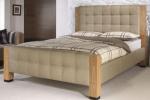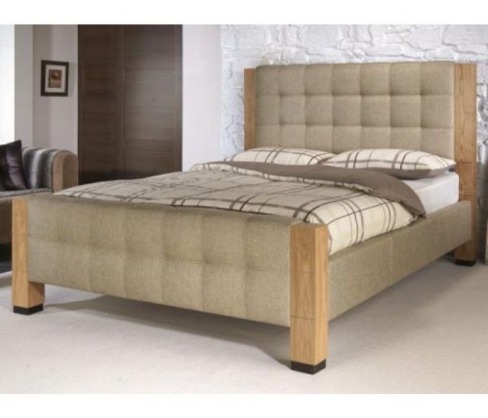Full Size Loft Bedstead Blueprints - Identify Vital Steps For Building A Template Fast


Drive screws through the seat brace into the tenon. These represent the top of the base cabinets and the bottom of the wall cabinets. To finish the dado, just make several passes to cut away area between your initial cuts. Make sure you adjust the diameter of holes according to bowls you are going to use. Cut 45-degree angles tangent to hole, and then rip the blocks free from the long board. We'll show you how to build it in just a handful of steps. (https://woodcraftdiagrams.com/diy-rustic-bed-frame-plans-blueprints) Then work timber filler into all of edge grain, nail holes and dents. Then start anywhere on the workpiece and run timber router around the wood counterclockwise.
I get handsome, sturdy, real-wood furniture for the cost of assemble-it-yourself pieces sold at discount stores. Wrap sandpaper around a piece of leftover dowel to get into tight radiuses. Once posts are craft to size and set in the piers, install 2 x 6 floor joists. Screw the fasteners in place, then turn over the table's base and center it on the top. Start by driving a lag screw on one end of cleat, check for level, then screw down the other end before driving middle screws. Drive additional screws into the waste area to help draw pieces tightly together.
Let it dry and add finish to your liking. To provide proper fastening of top to pedestals and to provide a place to hang the pencil-drawer (additional info) slides, install two cross strips as shown in drawing. Then call the electrical inspector for a final inspection. Cut house cavity to length and drill ventilation and entrance holes. To make finishing easier, stay away from pieces that are green or have black streaks. This is a bit more than you need, but it's worth having extra. Twist until looped ends snap off. The length of spacers is determined by your track mounting method, whether there is trim around the door or at floor that you must clear, and thickness of your door.
You could shift position of the brackets if you want. If you have the patience to experiment, you could buy a couple of cans of stain and mix them to create your own. If you're dissatisfied with look of any of lumber, you can always exchange it. Scribing and sanding allow shelves to fit perfectly against wall contours, but you could skip these steps if you don't mind a few gaps. I am considering selling it and buying a miter saw or table saw. The layers of stackable shelving are held together with steel pins. Learn how to refinish furniture from a pro.
Long and narrow for easy carrying, these toolboxes were little more than five boards and a heavy dowel handle. Examine the collet on your router to determine the bit shank size it could handle. Wait until the glue changes from liquid to a jelly-like consistency. Use hinge adjusting screws to adjust doors until the space between them and the cabinet is even. Square the template using the 6-8-10 squaring method shown. Trim deck boards flush with the rim joist when you're done. Fasten top of stringers to the deck. He clued us in on which tools you should take along to yard and how to estimate what size lumber to buy.
The hot glue will hold just about anything as well as or better than any clamp ever could-if using a clamp is even possible. Carefully measure and use a straightedge to guide your circular saw cuts. Then chisel out the remaining wood until figure-eight sits flush to the shelf. Leather, canvas and cloth gloves all offer plenty of protection, but should still be comfortable. Leave extra room around it so it could expand and contract freely. You don't have to be an expert to build it either. Don't caulk tops of other three trim boards. A sled is supposed to guarantee a square cut, and truly square cuts are essential for the boxes of this wall unit to stack properly.
Leave top cleats long and rip them to exact fit during assembly. Then, round the exposed edges -- those that won't abut other parts -- of the side and back rails. Gang sanding with a random orbit or belt sander lets you smooth a bunch of edges in one pass. Make sure front beveled edge of bottom makes solid contact with bottom edge of front. Your goal is to take slack out of cable and then adjust each shelf so it's level from front to back while you tighten the collars. Attach boards to studs, or to the drywall with screw-in drywall anchors.
Your slots will still be too long and visible at inside corners, but a little filler and finish will hide them. Place these pieces next to the saw's blade and butt the fence to them.